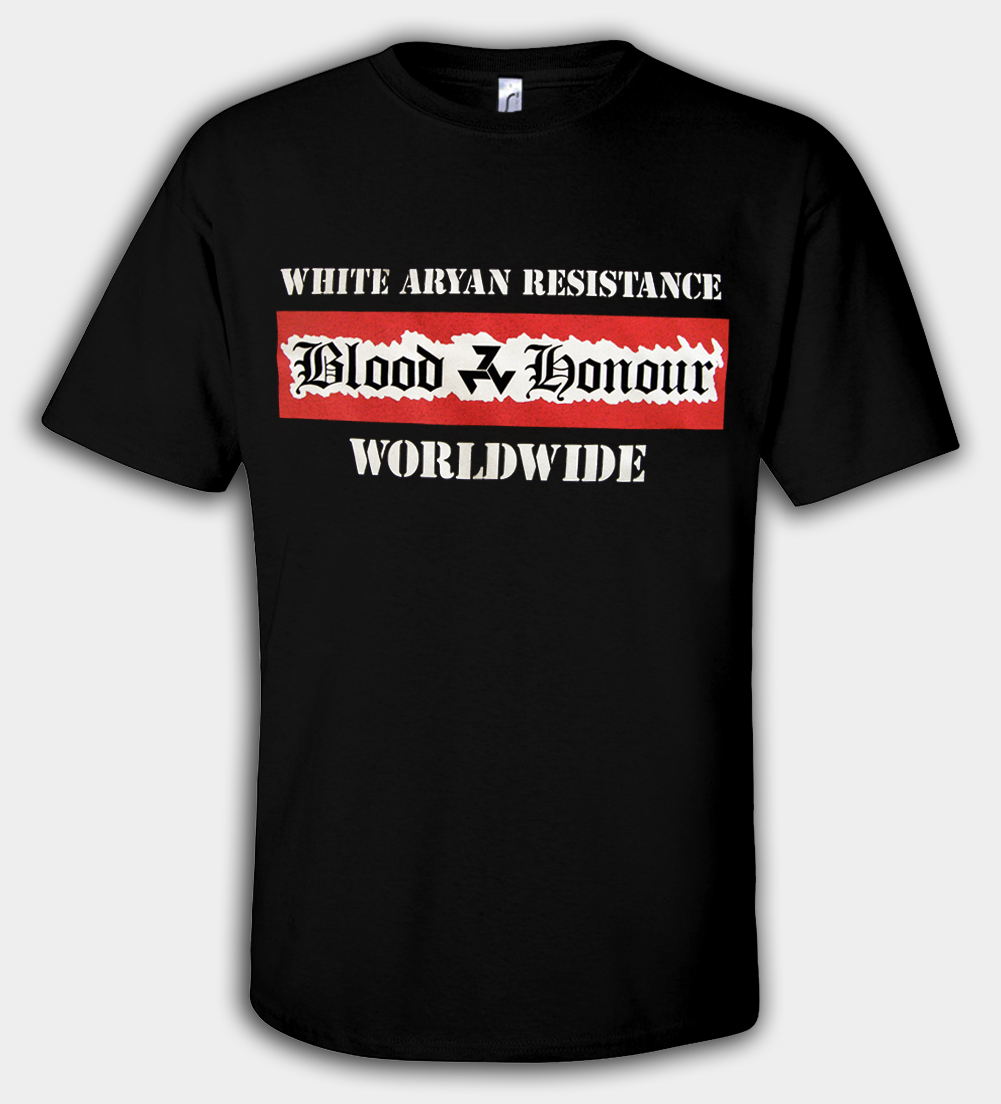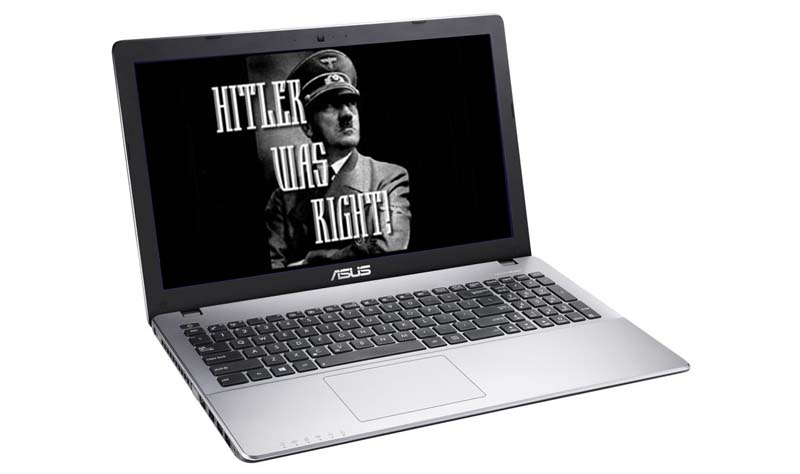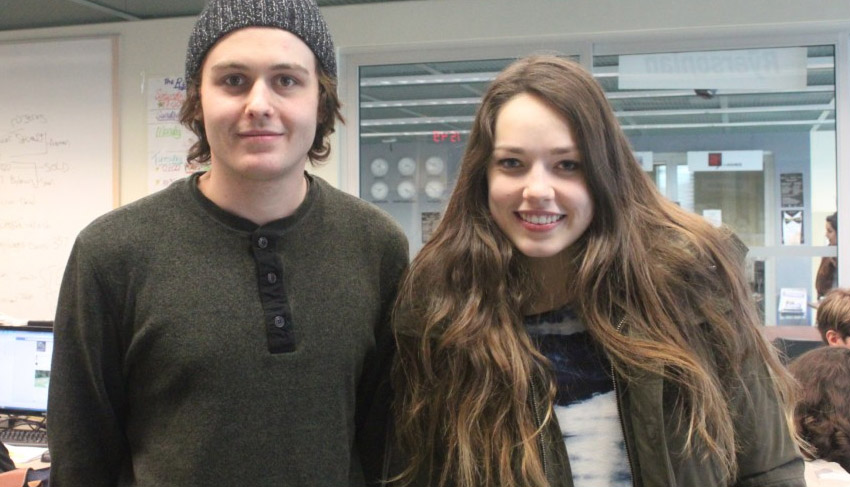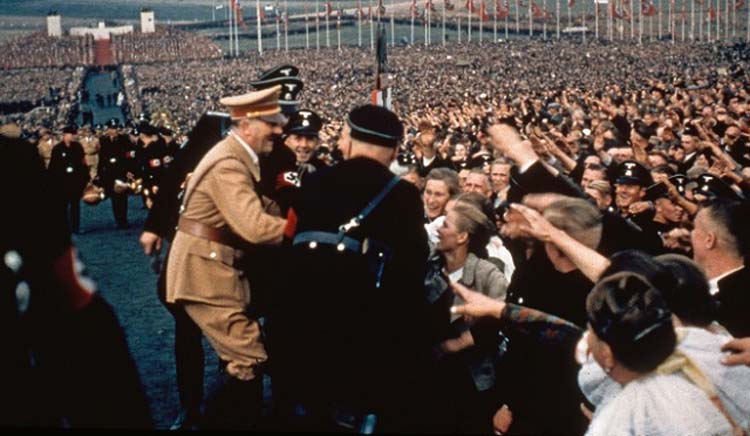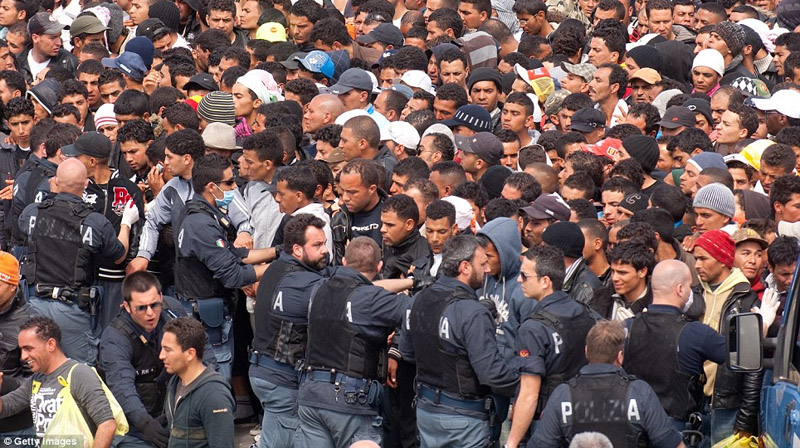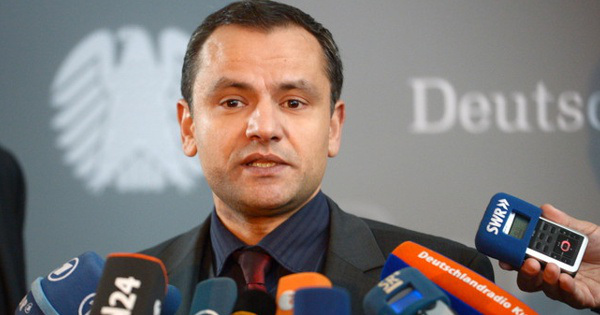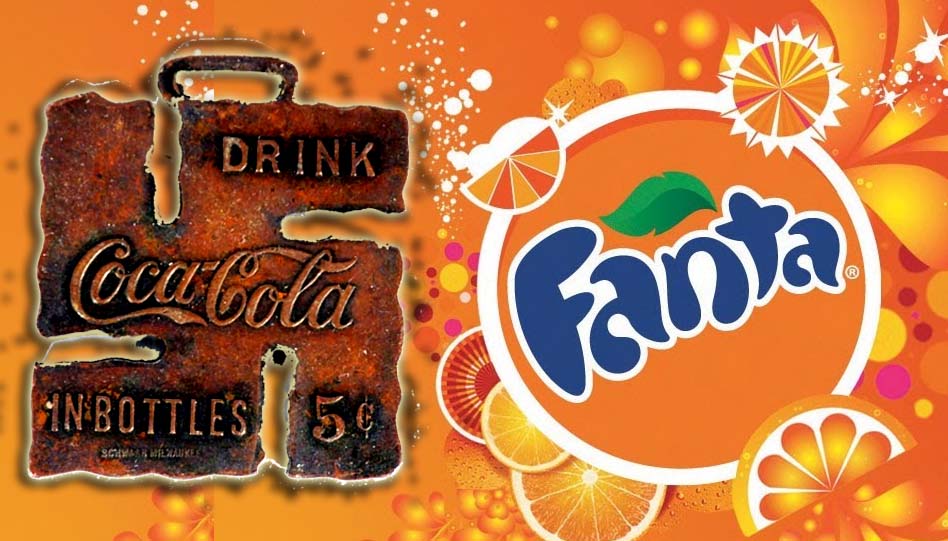Gerhard Lauck: Joachim Peiper’s Final Struggle against Communism
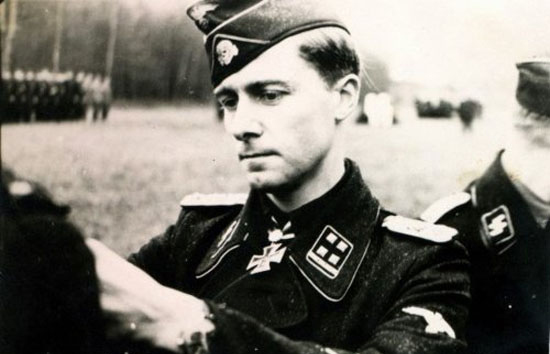 Joachim Peiper was born on January 30th 1915 as the son of an officer’s family in Berlin.
Joachim Peiper was born on January 30th 1915 as the son of an officer’s family in Berlin.
He belonged to the Leibstandarte SS Adolf Hitler. In 1938 he became the adjutant of Reichsführer SS Heinrich Himmler. But as the war started, he wanted to serve at the front line. He commanded the 10th SS Leibstandarte A.H. company in Poland, Holland, Belgium and in France. In 1941 he fought in Russia with the 3rd Panzergrenadier battalion of the SS Panzergrenadier regiment 2. He replaces the 320th infantry division of General Postel, encircled in Kharkov.
On March 19th 1943 he takes Bielgorod. In September 1943 he is in Italy. In November of the same year he fights for the Reich in Jitomir and with the 1st army breaks through the encirclement at Kamenets Podolsk.
Until October 1944 he fought at the West Front. On December 16th 1944 – under the command of Sepp Dietrich’s 6th Panzer army – he is at the spearhead of the offensive in the Ardennes with his 1st SS Panzer division L.A.H.
He advanced to La Gleize near Stavelot. Cut off from the rest of the army, he was encircled. But he could escape with his men, on foot and in icy cold, leaving back all the war material. Always fighting under Sepp Dietrich’s command, he battled the Soviets until the end, at the west of the Danube near Vienna. The same way in the alps at St. Pollen and Krems where he and his men finally surrendered to the Americans. He made it to SS-Obersturmbannführer and bearer of the Knight’s Cross with Swords.
After Germany’s capitulation this flawless, noble-minded and incredibly brave soldier was imprisoned, beaten and humiliated. He was accused of having ordered the execution of American POWs at Baugnez near Malmedy during the offensive in the Ardennes: Caught by the Kampfgruppe J.P., the captured U.S. soldiers were taken to a meadow to wait there for their transport to the front line. Peiper left back some of his men as guards. He himself drove at the head of his tanks far in front of the following troops to Ligneuville. As most of the Kampfgruppe troops arrived in Baugnez, the troops remained there chatted with their comrades left behind. A Spähwagen had a breakdown and was repaired. Suddenly a soldier sitting on a tank startled and noticed that some of the American prisoners had made use of their inattentiveness and wanted to flee. But a shot fired from his handgun caused panic among the prisoners who were running away in all directions. Submachine guns were used and 21 Americans shot while fleeing.
After the capitulation the men of the 1st SS Panzer division were tracked down and taken to the camp Zuffenhausen. 400 were transferred to the prison of Schwäbisch Hall near Stuttgart. Peiper’s troops consisted of mostly very young soldiers. One was 16, two were 17, eleven were 18 and eight were 19 years old. 22 of the 72 convicts were thereby below the age of 20; all of them were tortured in order to force any confessions. Peiper was an example for his crew, and under his command the team made well. There was never any betrayal among his units. The men were taken to the KZ Dachau where 72 of the 74 accused were convicted at a show trial. One commited suicide, one was Alsatian and was handed over to a French court. 43 – among them Peiper, who was called to account for his men’s actions – were sentenced to death by hanging, 22 to life imprisonment, eight to 20, eleven to ten years of prison. The trial was later newly heard and the sentence to death was replaced by life imprisonment. After eleven years of custody, J. Peiper was released as the last of his comrades in December 1956.
In January 1957 he started to work for Porsche in Frankfurt. Syndicates demanded his dismissal. Afterwards he worked for VW in Stuttgart, but there he was dismissed as well because of leftist agitation. With this he realized that he could not remain any longer in Germany and moved with his family to France. During the offensive in 1940 he had become acquainted with the region around the Langres Plateau and already at that time he loved it as a beautiful and quiet place. He then helped a French POW, a German-friendly nationalist, who had to work in Reutlingen for some relatives of Peiper like a forced labor convict in a garage. But there was a regulation between France and Germany, enabling the release of two French POWs for every voluntary worker willing to work in Germany. On Peiper’s recommendation that man, Gauthier, was allowed to return to his family. He had not forgotten Peiper and as he had to leave Germany in 1957, it was Gauthier who helped him and sold him the watermill of Traves. That building was in bad condition and Peiper did not have the necessary financial means to restore the mill. SS-Obersturmbannführer Erwin Ketelhut has afterwards taken over the water mill and in 1960 Peiper made build a house in Spannplate, high up on the bank of the Saone, hidden by bushes, not to see from the streets and like a military fortification. He had lived there – despite threats and anonymous phone calls – quite peacefully for over sixteen years.
On July 11th 1976 he bought some wire for a kennel in a shop in Vesoul, the capitol of that department. The salesman was an Alsatian: Paul Cacheux, member of the communist party, recognized through his accent that he was German and asked him whether he had been in France during the war. Peiper paid with a check with his name and address on it. Paul Cacheux looked up Peiper’s name in the "brown list" where all wanted Germans were registered. He passed his data over to the Resistance. On June 22nd 1976 the French communist newspaper "L’Humanité" wrote: „What does this Nazi do in France?". It was demanded to force Peiper to leave France. Flyers showing Peiper as a war criminal and Nazi were distributed to people in Traves. "Peiper, we’ll deliver you a 14 July!" was smeared on walls. July 14th is of course the French national holiday.
The morning of July 13th Peiper sent his wife, suffering from cancer, back to Germany. He himself did not want to leave his house because he expected it to be burned down. His neighbor Ketelhut had suggested to pass the night in the water mill but Peiper rejected that offer. He did not want Ketelhut staying with him either, since he would have shot any attackers. "No", he said, "It’s been already killed enough." Joachim Peiper waited on the veranda of his house from where he could observe the Saone river. Erwin Ketelhut had lent him his rifle. At 10:30 pm he heard a noise in the bushes and saw a dozen men climbing up the river bank. He shot in the air to intimidate the drunk intruders. She called him to come outside. He did that and opened the door in order to talk to them.
What happened afterwards can only be told by the culprits. Obersturmbannführer Joachim Peiper’s body was found charred and only one meter in size, he had no hands and feet. He died at about 1:00 am. The house was burned down, the ceiling broken in. What happened between 11:30 pm and 1:00 am? Was the Obersturmbannführer alive when he was mutilated? Was he still alive when he was burned? The culprits had poured gas on the floor, lit with a mixture of petrol and motor oil. Peiper lay in his bedroom, on the left side with his back to the wall, one arm bowed before his chest. Nothing had fallen upon him. He died by the immense heat. The body was not cremated but shrunken.
Erwin Ketelhut and the French having known and liked him shared the opinion that this knightly man, having defied so many dangers, should not have died this way. The murderers had driven with their car over a meadow to the river bank where two barges lay ready. With them they had crossed the Saone and afterwards had to climb up the steep bank through bushes. After the murder they ran the other way back over the meadows, in front of the house, to the street. The firemen searched the river for missing body parts. The French police’s investigation work took six months. The communists from Vesoul and the Resistance members were questioned. Nobody knew anything! Then the case was shelved. Nobody was ever arrested or punished! The area of Traves is not densely populated, there are only about ten inhabitants per square kilometer. Everybody knows everyone there and the people know everything about each other.
The culprits are known to the inhabitants, but the people say nothing. In the night from 13th to 14th July we have a protest vigil for Obersturmbannführer and bearer of the Knight’s Cross Joachim Peiper. The injustice made to him will not remain unpunished! With this cruel death Joachim Peiper has paid his last respects to his people and his homeland.
Gerhard Lauck (NSDAP/AO)
Popular products:
Recent news:
- White Students Turned Away from “Anti-Racism” Seminar for Being White
- Greek PM Warns of "Far-right Threat" in Europe
- The Dark Side of the "Liberation of Europe"
- "Former Republics of the USSR are on their Way to a Nazi Revival", Says Influential Zionist Group
- Mein Kampf: The world’s most dangerous book?
- Xenophobia Rising: Rome Removes Africans from Refugee Centre Besieged by Nationalists
- "If Jews Leave, Europe will Face Economic Disaster", Jewish Leader Warns
- Angry, White and Proud: New Documentary on English Nationalism (VIDEO)
- Golden Dawn Leadership to Stand Trial on Hitler’s Birthday
- Wreck of Kriegsmarine U-boat Located in Java Sea
- Germany’s Biggest Anti-Racism Crusader Pleads Guilty to Child Porn
- Dutch "Multicultural" Students Resist Holocaust Education
- In Germany, Fanta Ad that "Forgets Evil Nazi Past" is Pulled
- Dutch Police Investigate Sale of Soap Supposedly Made From Jewish Holocaust Victims’ Remains
- In London, Teacher Fined For Posting Hitler Picture With Words "You Were Right"
- Falsely Accused Czech Publishers of Adolf Hitler Speeches Seek Compensation
- Race Riots Coming to Toledo: National Socialists Plan Return for Demonstration after a Decade
- VIDEO: Nationalists Confront Antifa Protesters at Arizona State University
- Italians are Resisting Mass Non-White Immigration
- "Jews using Holocaust to Suck the Blood of Germans," Egypt TV Host Says (VIDEO)
- UK: "This Flat is for Blacks Only": Shocking Racist Campaign to Force White Mum Out of Home
- Norway Deports Record Number of Muslim Immigrants
- Italian Anti-Immigration Rally Draws Thousands of Nationalists in Rome
- Anti-Semitism Spreading Across Europe, Says Study
- The Witch Hunt Continues: Ex-SS Medic, 94, Charged with Mass Murder against Jews




